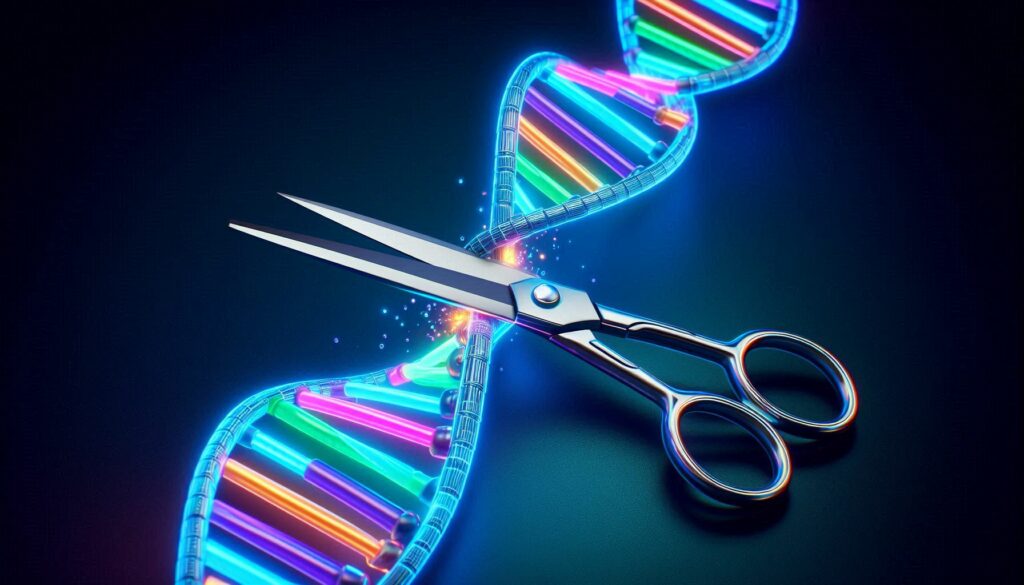EBT-101, a gene-editing therapy utilising CRISPR technology, showed promising safety and tolerability in an initial study. However, it fell short in preventing viral rebound among the first four participants who initiated a pause in their antiretroviral treatment, as reported at the International AIDS Conference (AIDS 2024) in Munich, Germany.
The antiretroviral treatment that most people living with HIV today take is excellent, it controls the virus’ replication to a point where HIV cannot be passed on. This doesn’t stop HIV inserting its own genetic code (RNA) into your T-cells, however, where it can lay dormant. These dormant but infected cells form what’s know as a “reservoir”, from which HIV can begin replicating again should antiretroviral treatment be interrupted.
EBT-101, developed by Excision BioTherapeutics, utilises the CRISPR-Cas9 technology, often described as “genetic scissors”, delivered by a harmless adeno-associated virus (AAV9) vector target precise locations within HIV, specifically GagD and LTR-1. By adding an extra enzyme EBT-101 can also remove a significant portion of the genetic material essential for the virus’s replication process.
The study
In 2022, the first human clinical trial of EBT-101 was launched, enrolling individuals on antiretroviral medication who had a stable undetectable viral load. The trial’s protocol stipulated that those who maintained viral suppression for 12 weeks following the gene therapy would experience a temporary interruption in their treatment regimen – followed by careful monitoring.
The first six individuals enrolled into EBT-101 were all cisgender men, with four being white and two latino. Their ages spanned from 29 to 50 years, and they had been diagnosed with HIV between the years 2000 and 2018, initiating their antiretroviral therapy within two years of receiving their diagnosis.
All participants were receiving Biktarvy (bictegravir/tenofovir alafenamide/emtricitabine) or Dovato (dolutegravir/lamivudine) antiretroviral therapy at the time of entering the study.
Three participants received a starting dose of EBT-101, whilst the remaining three were given a dose three times as strong. The doses were given via infusion.
Test results:
- One participant saw a 36% reduction in intact proviral DNA – this is considered to be significant.
- Four participants showed no change.
- One participant, with a much lower CD4 count than the others, maintained a high level of intact proviral DNA.
Of the six participants five started an analytical treatment interruption with associated monitoring. The participant with the low CD4 count was not considered eligible to continue to this stage. One participant had not concluded the monitoring period at the time of presentation.
In three of these men the virus rebounded at 2 weeks, 3.5 weeks and 4 weeks. The participant who saw a 36% reduction in his viral reservoirs, however, managed to maintain a suppressed viral load for 16 weeks. Two to eight times longer than the other three participants who made it to the treatment interruption stage.
Research is underway to understand why the participants responded so differently, and Excision BioTherapeutics is already working on a second generation of the treatment – hoping to achieve better results at lower doses.
Safety and tolerability
There were no significant negative outcomes observed during the study. Reports indicated no toxicity associated with the AAV9 vector, and there were no instances of acute retroviral syndrome. A total of nine minor adverse events were noted, which included slight increases in liver enzyme levels.
Additionally, no “off-target effects,” which refer to unintended DNA alterations, were detected. By the 24-week mark, EBT-101 was completely cleared from the blood samples, indicating a favorable safety profile for the treatment.
Conclusion
Whilst, on the face of it, this small scale study wasn’t overly successful what it has done is show that there may well be place for gene editing techniques, such as CRISPR, in future HIV treatment combinations and possible cure research.
The EBT-101 trial has also shown that the trial protocol, and the treatment itself, was safe and generally well tolerated – which leaves the door open to future research.
Dr Rachel Presti of Washington University St. Louis School of Medicine noted that:
“Initial data from the EBT-101-001 trial provides important clinical evidence that a gene editing treatment modality can be safely delivered for targeting the HIV DNA reservoirs in human cells,”
“This study provides researchers with invaluable insights for how CRISPR technology can be applied for addressing infectious disease and was an important first step towards additional programs designed to optimise this treatment modality for treating the millions of individuals who are impacted by HIV and other infectious disease.”



